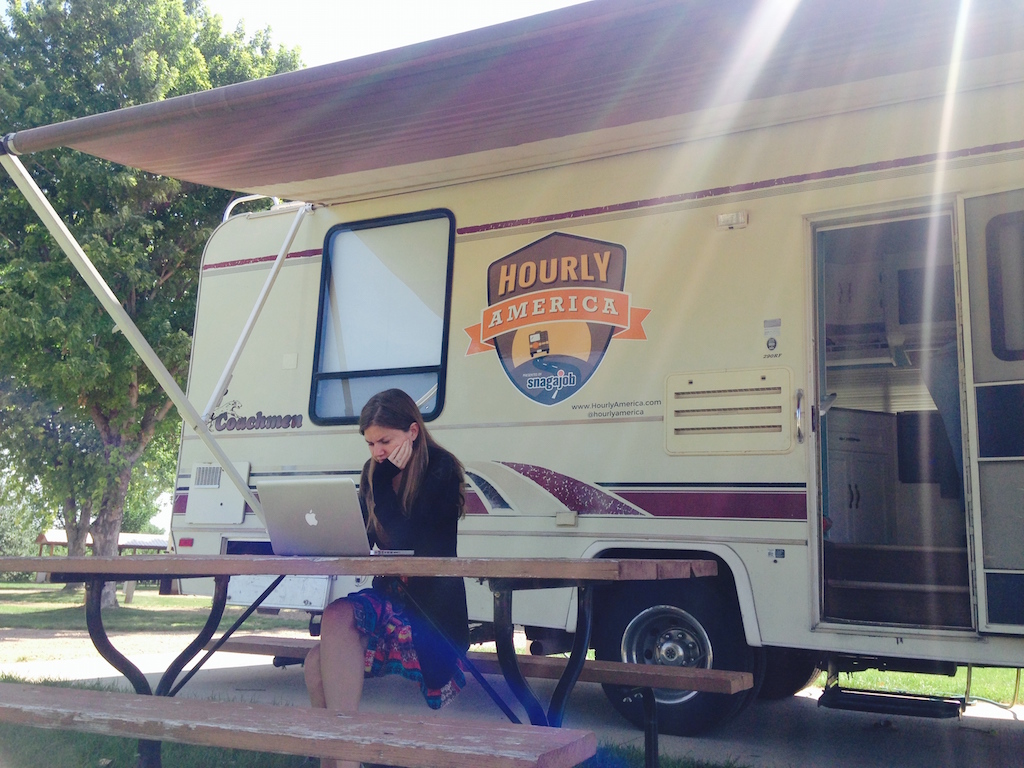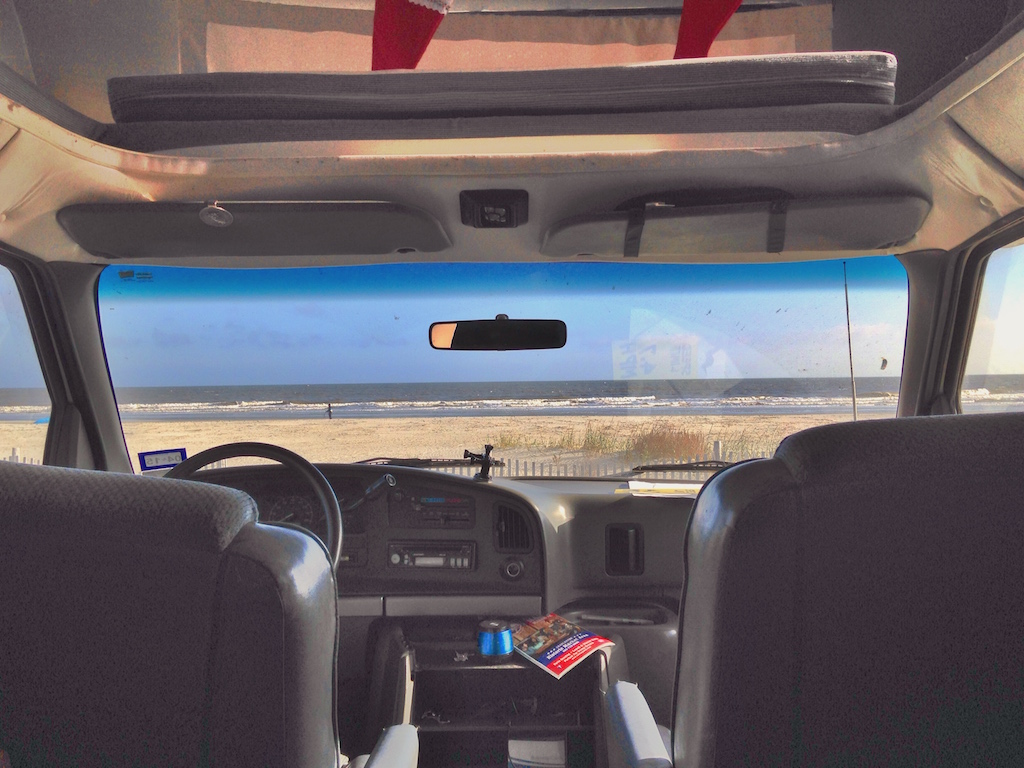
Brief Guide to Working on the Road
I very clearly remember my first day to work on the road, a short 18 months ago. We were in the middle of the desert outside of Albuquerque at the Enchanted Trails RV Park and, despite it being the middle of June, we opened our windows to let the breeze blow in. I sprawled out on the couch, laptop resting on my knees, and plucked away at the keys writing about my first few days as Mrs. Padgett, the RVer (That's my proposed superhero name).
Writing on the road is easy. You don't need Internet. You don't even necessarily need electricity or a computer. Just a pen and some paper. But our other work--film and consulting clients--you know, the kind of work that actually pays, requires tangled cables, expensive equipment, a powerful computer, and high speed Internet.
If you've spent any time RVing, you know good Wi-Fi is difficult to come by, which makes real work nearly impossible.
Plus, to top it all off, if you're RVing full-time, you're probably spending most of your time in places that don't make you want to work, like national and states parks or like this one time in Wisconsin when we stayed at campground complete with a waterpark and free ice cream. I accomplished nothing that week.
As I've learned, the best way to get some work done is to set a time for work and a time for play. For Heath and I, that usually means searching for a nearby coffee shop, a place where we can't be distracted by a hike, or by a couch that really wants me to kick back and take a nap, or by getting up and staring into the fridge every five seconds hoping for a good snack to appear.
Remember: Working on the road isn't sexy. But it is a way to fund your adventures and keep you traveling! So if you're going to travel full-time and you're not retired, you'll need to learn how to work on the road without being distracted by views like this:
Here's what we use to get some real work done:
- The Starbucks App Starbucks is our most useful asset for getting work done on the road. (I wish I were paid to endorse Starbucks.) They have reliable Google Wi-Fi that we need for Skype calls and downloading files. We usually choose Starbucks over other coffee shops because we know we can trust the Internet speed and security, plus the app can give us exact locations of nearby stores, and we're gold card members so we get free refills on drinks. It's win-win-win! Also, unlike local coffee shops, Starbucks baristas never give you mean looks for using the Internet, asking for a glass of water, and not actually buying anything.
- Laptop and charger Odds are you probably don't cart around a desktop computer in your RV. But you might use an iPad or a tablet, which isn't ideal for working on the road. You'll need a laptop (I use a MacBook Pro, since I mostly do film work) that's easy to cart around. Like I said, we usually work at Starbucks since they typically have plenty of outlets for charging. We like to dry camp, so we learned early on to maximize utilizing coffee shop electricity when we can. (Although our new Winnebago can charge my computer without running the generator, which blows. My. Mind!)
- Headphones Personally, I don't like wearing headphones while I work. But Heath can't work without them. He says it's something to do with how I won't stop talking to him while he works and causing a "distraction." So if you have a talkative spouse or just want to tune out the world to get your work done, be sure to have a pair of headphones on you. More than once we've forgotten headphones and driven back to our RV to retrieve them. (I now keep spares in our car).

- Verizon Jetpack (or other hotspot device) If working in coffee shops isn't your style, or if you're camping out in the mountains at Glacier National Park, or somewhere off the beaten path, you'll need a hotspot. We use the Verizon Jetpack, which costs us about $20 a month, plus our data plan.
- Side note: A lot of people ask us what the best service for Internet on the road is. After traveling to all 50 states, I can say with certainty that Verizon really does have coverage everywhere, excluding parts of west Texas off I-10, parts of Alaska, and Signal Mountain Campground at Grand Teton National Park (we got service throughout the park except at this particular campground). That's pretty amazing, if you ask me. When RV park Wi-Fi won't cut it and you don't want to or can't visit a coffee shop, the jetpack is exactly what you'll need.
 Heath taking his daily nap in our hammock
Heath taking his daily nap in our hammock
- Mini Breaks
When we're working from parks or on particularly beautiful days, we make a point to take a walk in the middle of the workday. It gets our blood flowing, wakes us up, and always makes us more grateful that we can live and work on the road full-time. What good is the RV life if you don't take time to enjoy it?
Hopefully these tips will help you figure out how to work better on the road. It wasn't easy to learn and took us visiting a dozen states before we got the hang of it. But now Heath and I have worked from our RV for 18 months and we don't plan on stopping any time soon. It's too much fun.
*Bonus tip: When working at a coffee shop, always bring snacks with you. Otherwise you'll be there for ten minutes before someone complains that they're hungry and someone else says there's no way you're spending $7 on a prepackaged sandwich. Trust me.
Alyssa Padgett
Comments
Comments on this post are moderated, so they will not appear instantly. All relevant questions and helpful notes are welcome! If you have a service inquiry or question related to your RV, please reach out to the customer care team directly using the phone numbers or contact form on this page .
